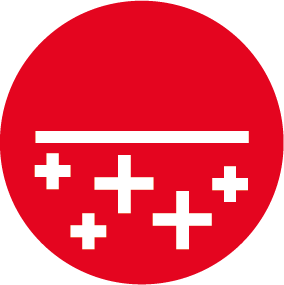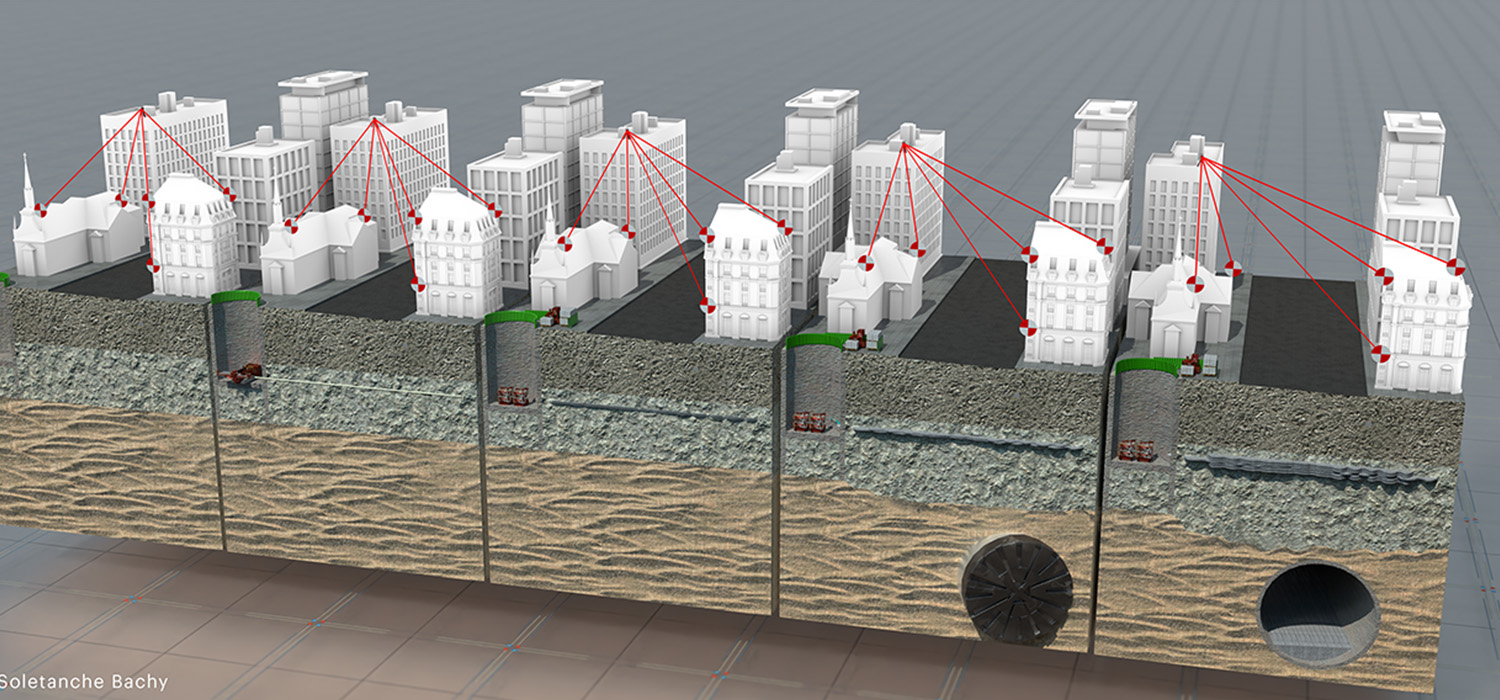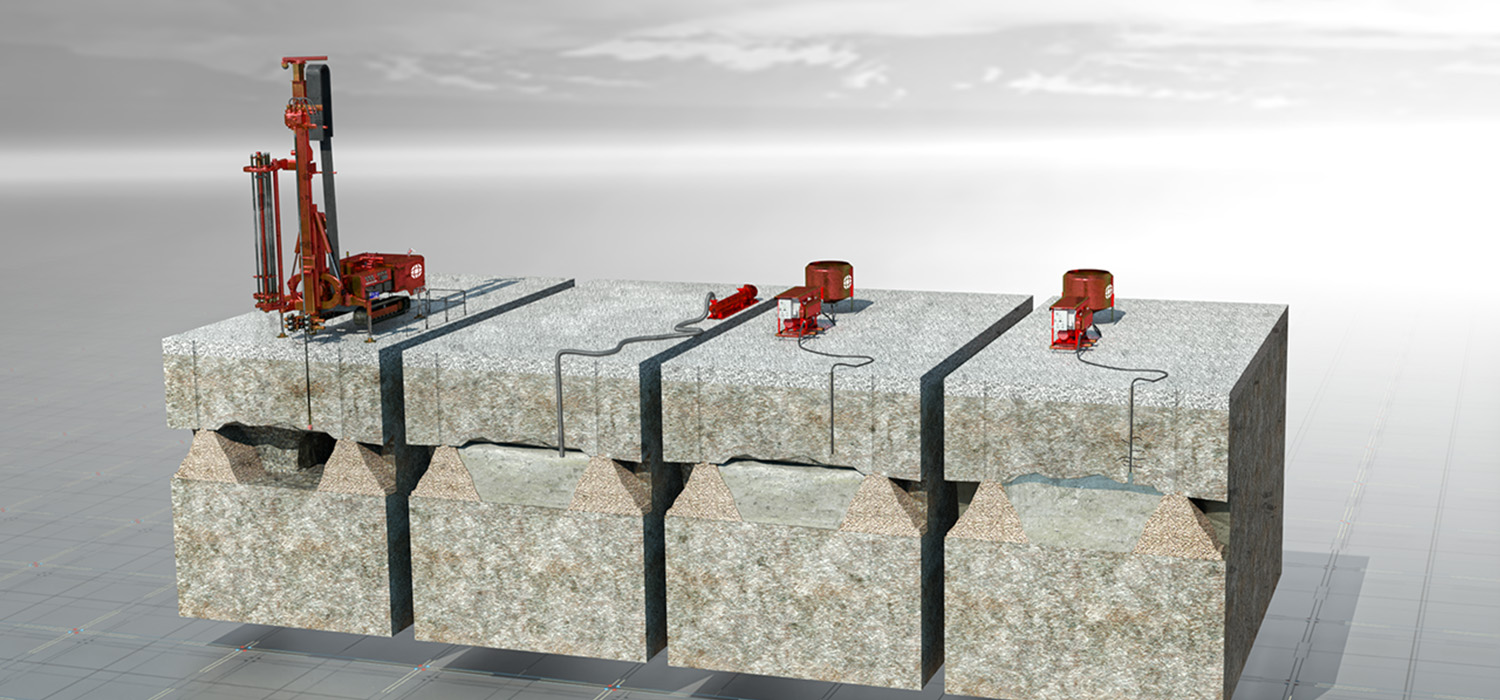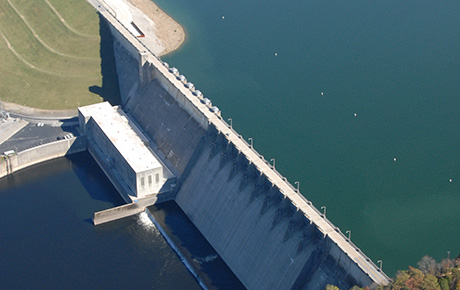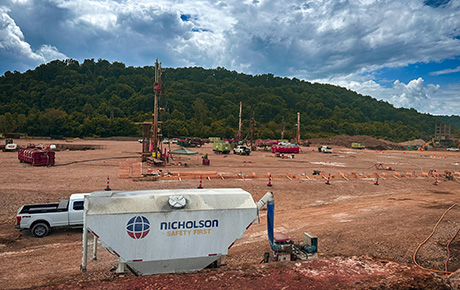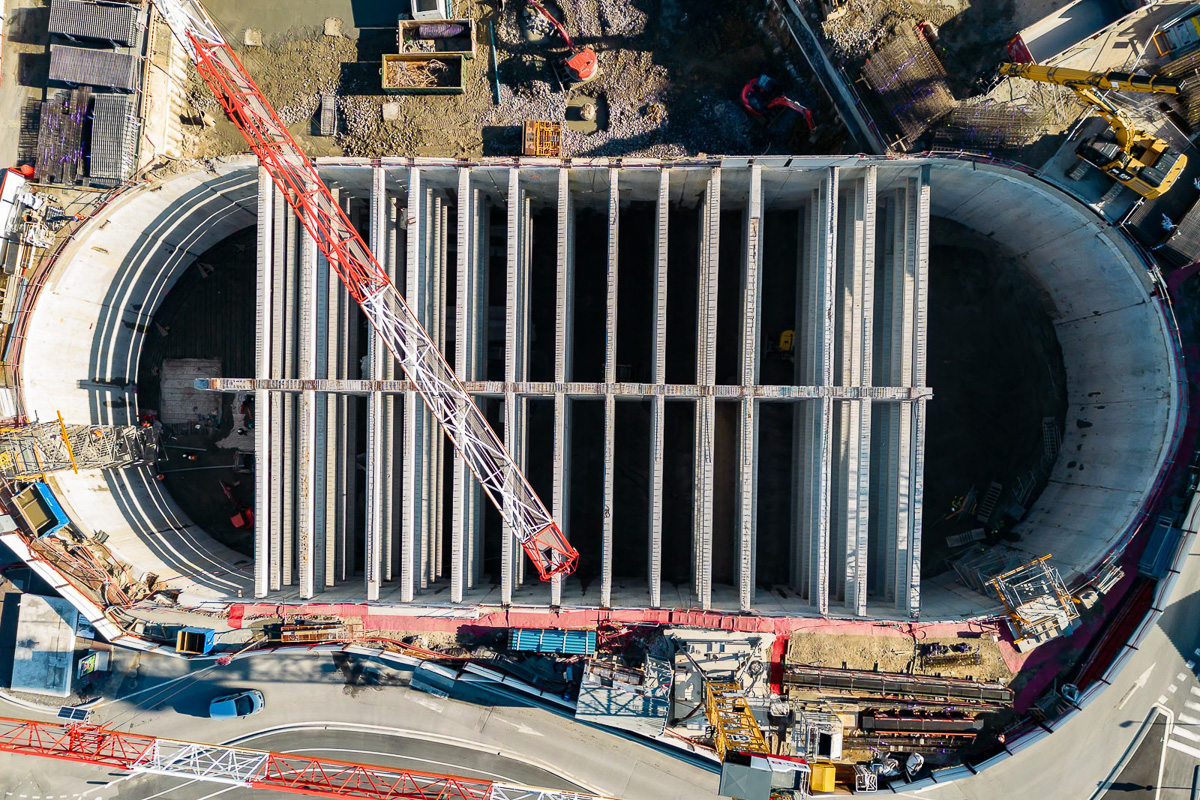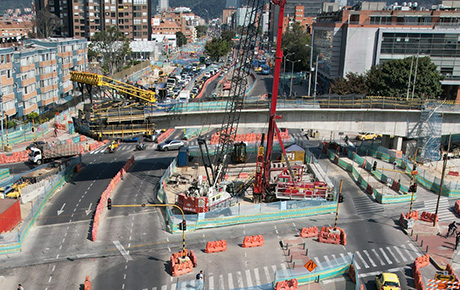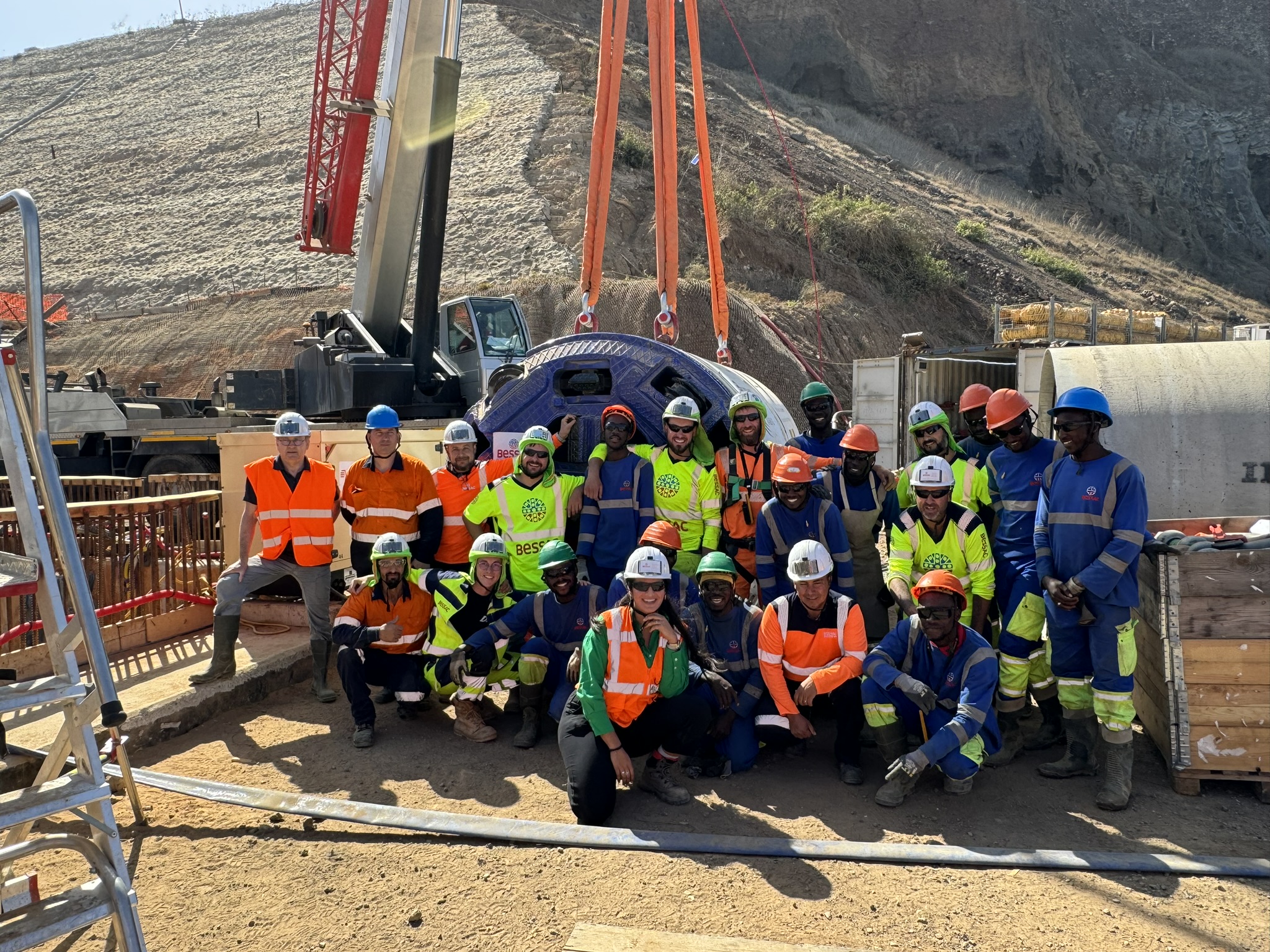Project Description
Soil-cement columns built by erosion
Whether it’s a dam and its watertightness, a tunnel and its consolidation, or the securing of quarries, Soletanche Bachy masters the entire range of injections to meet your needs.
What is grouting ?
Grouting into a soil or around a structure makes it possible to render soil impermeable and/or fully consolidated by filling its voids with a pumpable product (grout) that subsequently sets hard.
Various grouting techniques:
Grout can be used to fill voids in soil, cracks in rock and voids caused by dissolution (referred to as crack, impregnation or cavity filling grouting), and/or penetrate by displacing the soil by means of pressure or hydrofracturing (this is referred to as compaction grouting or solid grouting and hydrofracture grouting.). Displacement grouting can be used to limit structural deformation as a result of excavation (galleries and tunnels, large-scale urban excavations, etc.); this is referred to as compensation grouting (of structural settlement).
Grouting is always injected by drilling, often using devices to control the flow of grout into the soil (injection tubes, obturator bags, “tubes à manchettes”, etc.)
Applications
Underground excavation has always provided the broadest scope of applications for impermeability and consolidation grouting. The grouting techniques used vary widely depending on the desired end result and soil type.
What are the advantages of this technique?
It is an adaptable solution that can be used with all types of soil
The range of products and techniques available is very wide
The technique is fully compatible with the observational method
The processes can be used for impermeability treatment, consolidation, reinforcement or even the protection of existing structures
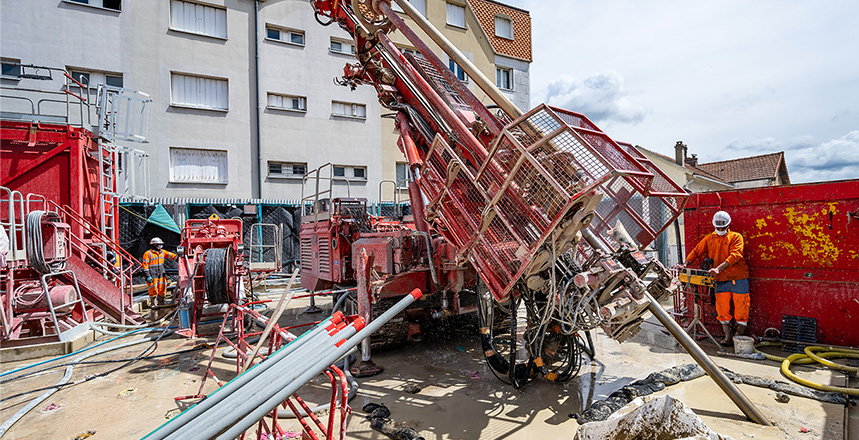
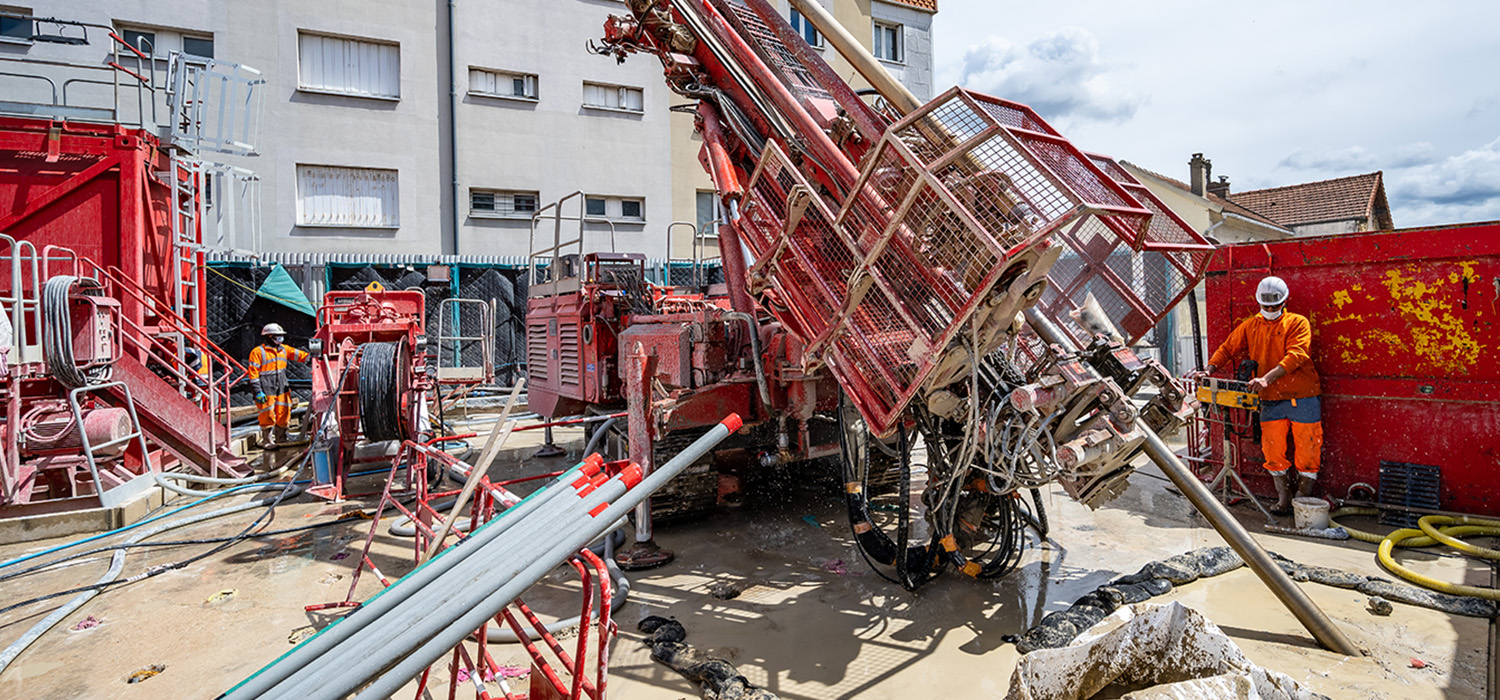
Implementation
What are the different types of grouting and how are they used?
The scope of applications for grouting is extremely wide. So for the purposes of example, we can make a distinction between:
- rocky terrain where grouting can be done on an ‘open hole’ basis, because the walls of the drilling are stable
- soft ground where the drilling will be lined by a casing or “tube à manchettes” to contain a grouting obturator.
What is a “tube à manchettes ?
The “tube à manchettes” is a tube with a smooth internal surface and with perforations every 30 to 40cm. These perforations are covered by rubber sleeves, called «manchettes», which act as non return valves. The tube is sealed into the grout hole with a weak bentonite-cement slurry (the sleeve grout) to prevent the subsequent grout from travelling along the annular space.
Grout injected into alluvial soils :
Grout is injected into alluvial soils using “tube à manchettes”. This is usually a two-phase process: the first involving injection of a bentonite/cement grout to fill the coarse grain size, and the second using a more penetrative grout (liquid or ultra-fine suspension grout). The main criterion is the quantity of grout needed to provide optimum filling of soil porosity.
For rock injection, the universally accepted method is “progressive tightening”. With this method, we start with primary boreholes, spaced fairly widely apart. Intermediate boreholes (secondary, tertiary or more) are then drilled, creating a progressively tighter mesh of boreholes.
The grout injected can be:
- liquid: the penetrative power of these grouts is essentially a function of their viscosity and the way that viscosity changes over time
- suspensions: in addition to viscosity, these grouts also have rigidity or cohesion, which limits their scope of action. The granularity of the slurry also limits the size of the voids or pores into which the grout can penetrate. Suspension stability is also an important parameter for this form of grouting
- mortars: these high-rigidity grouts are used to fill cavities and voids, or in displacement grouting (solid or compensation grouting)
Soletanche Bachy’s advantages
Execution controls and monitoring
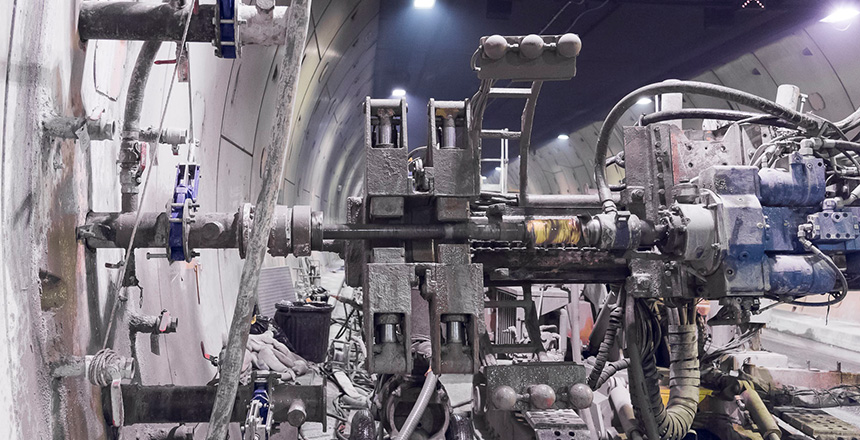
A computer chain dedicated to injection
Quality control is a key factor in grouting project success. So in the 1980s, Soletanche Bachy introduced its grouting computer system known as SPICE® (the name of the monitoring system) – GROUT I.T.® in the USA – which continues to be developed and has rapidly become a must-have for efficient management of the thousands of data generated by grouting worksites at all levels of production: project preparation (drilling locations and calculation of grout quantities), control of the grouting unit (pump monitoring and acquisition of flow and pressure data) and technical monitoring of quality and production.
The essential components in the computer processing system developed by Soletanche Bachy are:
– the CASTAUR® program, which summarises site survey data and builds the drilling plan
– the SPICE® monitoring system installed in the grouting unit, which controls the pumps on the basis of preset instructions to monitor the grouting injection process
– the SPHINX® program and its graphic visualisation tools: for grouting data management
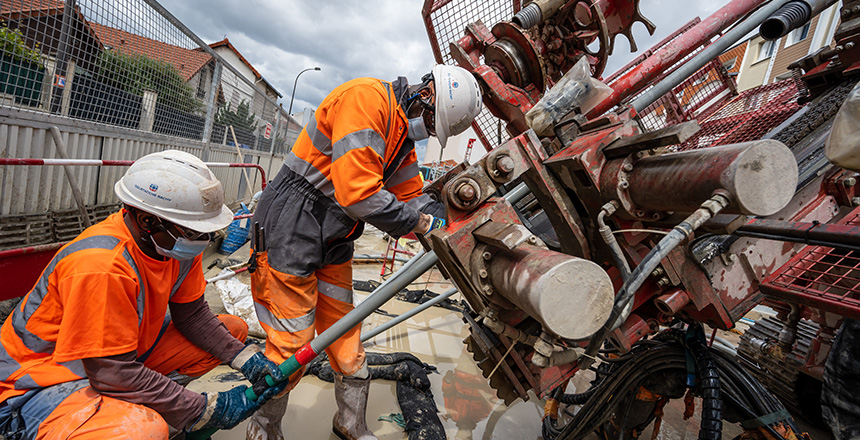
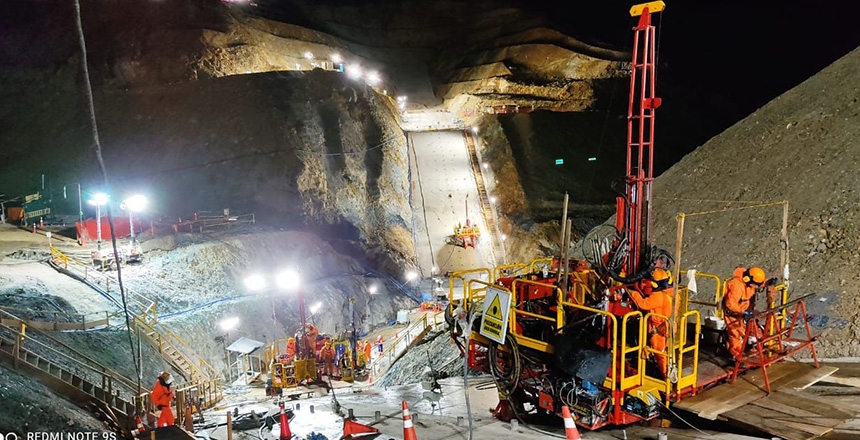
These computer-based tools make a considerable contribution to:
– Safety, as a result of more accurate and precise data gathering and worksite operational control
– Quality, as a result of its powerful summarisation and analysis tools for generating reports and visualisations
– Performance in terms of increased production and the ability to exercise efficient control despite the ever-increasing pace of worksite progress.
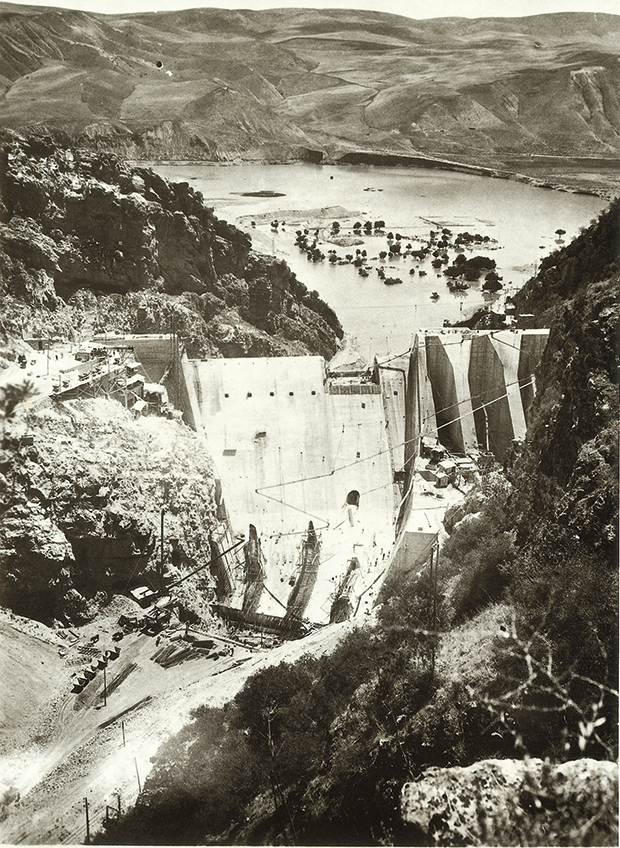
Did you know ?
Soletanche formed its first grout curtain on Morocco’s El Kansera dam in 1927




